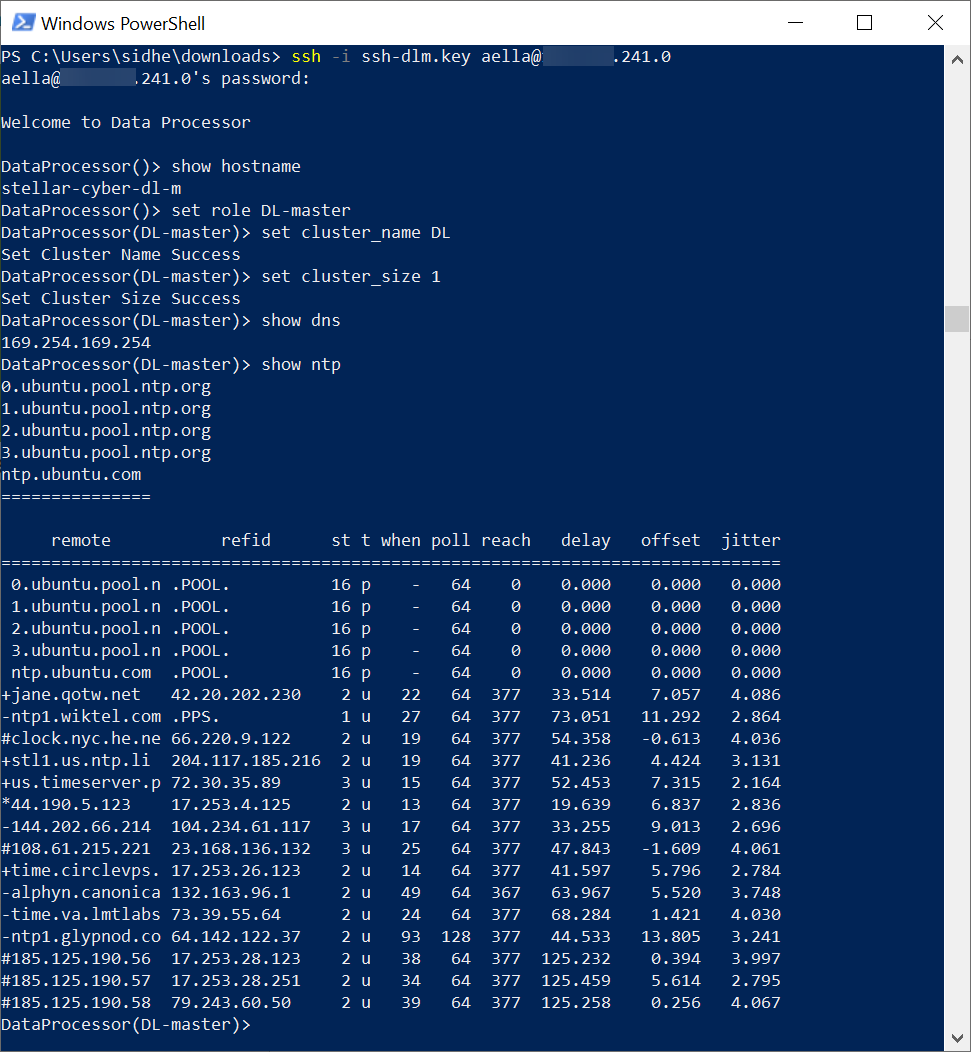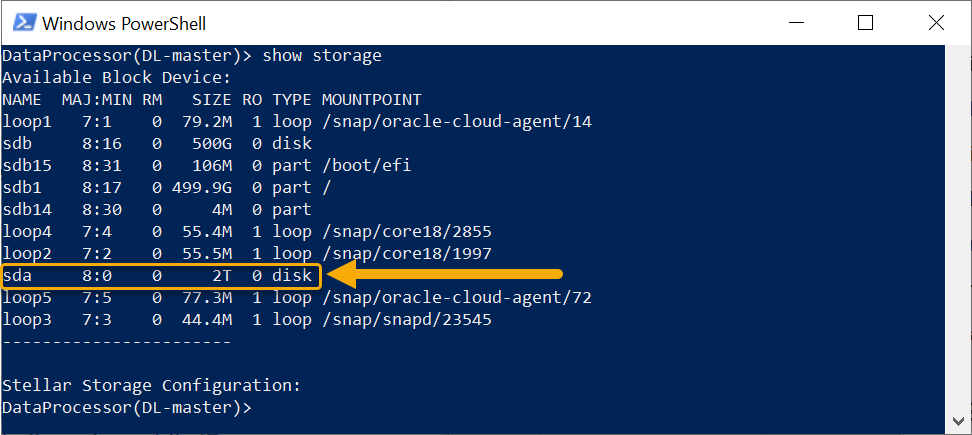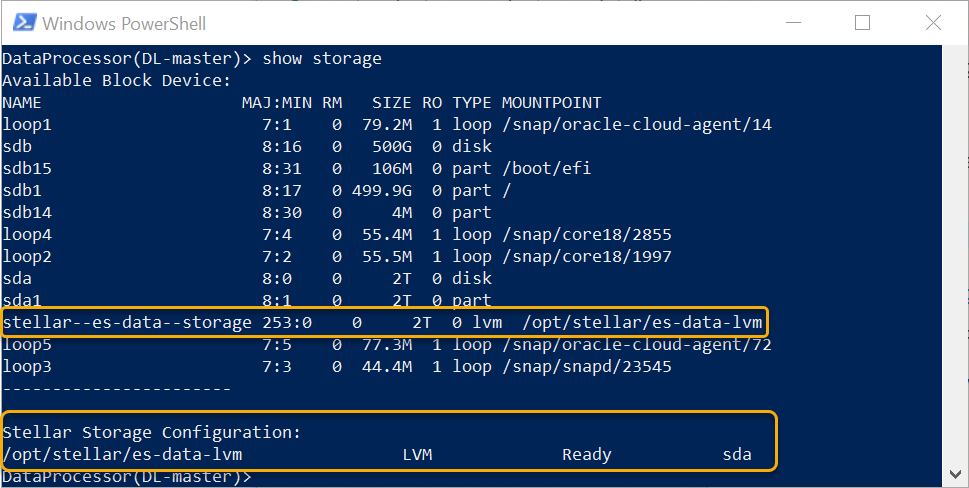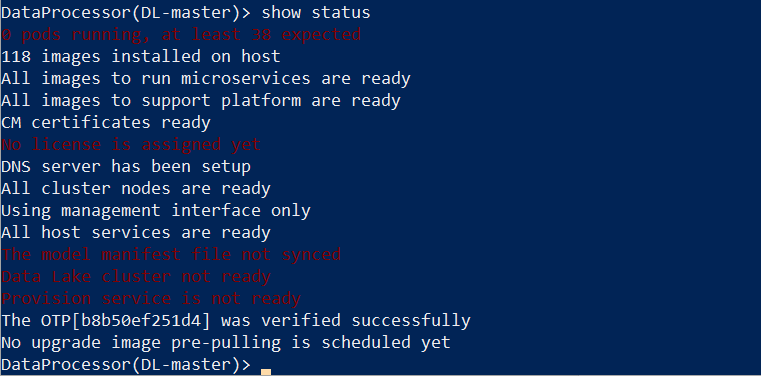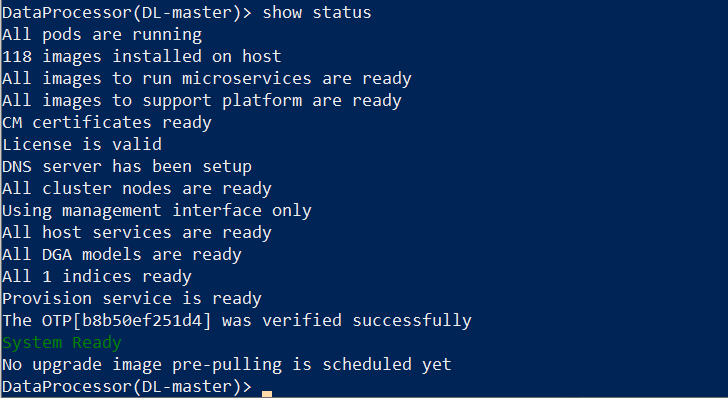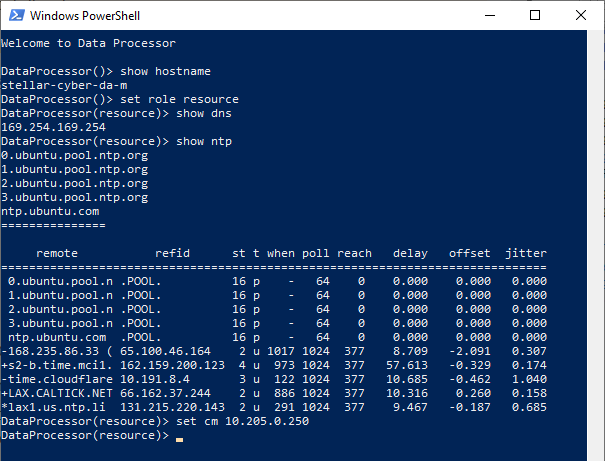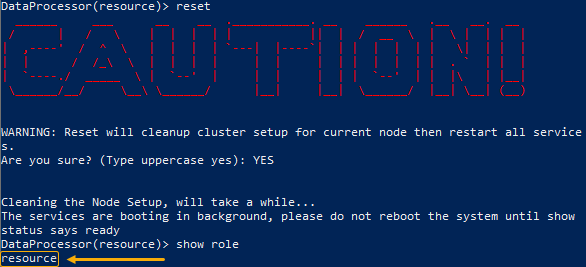Configuring the DL-m and DA-m in the CLI
Once you have launched instances for the DL-m and DA-m in OCI, you are ready to configure them in their respective CLIs. Use the following steps:
Get IP Addresses for Instances
When the instances for your deployment are up and running, you are ready to log in to their consoles and assign roles.
First, however, you need the IP addresses that OCI assigned when you launched your instances:
- Log in to your OCI Console.
-
Navigate to Compute | Instances. The active instances appear.
- Copy the Public IP and Private IP for both the DL-m and DA-m instances.
Configure the DL-m in the CLI
-
Access the console of the DL-m instance using an SSH connection to the public IP address you copied in the previous procedure. For example, from Windows PowerShell:
PS > ssh -i <ssh-key> aella@<public ip address> - Log in. The default username/password is aella/changeme. You are immediately prompted to change the password.
-
Change the password.
The system closes your connection automatically.
- Reconnect to the DL-m instance using the new password you just set.
- The prompt changes to DataProcessor>.
-
Enter the following command:
show hostname -
The hostname is set to the name you configured for the instance. You can change it using the set hostname <hostname> command, if you want. For example:
DataProcessor> set hostname DL-masterIf you do change the hostname, you must reboot the virtual machine to apply the change.
-
Set the role of the instance to DL-master as follows:
DataProcessor> set role DL-masterThe prompt changes to
DataProcessor(DL-master)>to indicate the role change. -
Set the name of the cluster using the set cluster_name <cluster_name> command. For example:
DataProcessor(DL_master)> set cluster_name DL -
Set the cluster size as follows:
DataProcessor> set cluster_size 1 -
OCI automatically configures DNS and NTP settings for the instance. You can verify the settings with the show dns and show ntp commands, respectively.
Here's how things look so far in our console session:
-
Configure the DL-m instance to use the block volume you attached in OCI as follows:
-
Use the set cm <ip_address> command to set the IP address of the Data Lake master's management interface as follows:
-
Set the Maximized Data Storage (MDS) option according to the size of the cluster:
-
If this DL-m uses two or fewer worker nodes, enable the MDS option on the DL-m with the following command:
DataProcessor> set mode MDS enable -
If this DL-m uses three or more worker nodes, disable the MDS option on the DL-m with the following command:
DataProcessor> set mode MDS disable -
You can use the show mode command to see the current setting for the MDS option.
The MDS option specifies whether the node stores data itself (enabled) or only manages storage and ElasticSearch operations (disabled). As you scale up to a cluster deployment with three or more DL-worker nodes, you disable MDS on the DL-Master and provision it with less disk space. The DL-worker nodes have MDS enabled and handle the actual storage while the DL-master provides storage management and search.
-
-
Use the set otp <one-time-password> command to license the DL-m:
DataProcessor> set otp <one-time-password/License Key>After license activation, you can find the OTP for your installation in the Licensing page.
-
Use the reset command to apply your changes. This command starts all Stellar Cyber microservices using your new settings.
- Confirm the reset with an uppercase YES. The image is downloaded (which can take a while, depending on your network) and installed.
-
Verify that everything is installed, ready, and running with the
show statuscommand. A screen similar to the following appears as it is installing:When it finishes the status is similar to:
The installation is complete and the DL-m is now functional.
Configure the DA-m in the CLI
-
Access the console of the DA-m instance using an SSH connection to the public IP address you copied in Get IP Addresses for Instances.. For example, from Windows PowerShell:
PS > ssh -i <ssh-key> aella@<public ip address> - Log in. The default username/password is aella/changeme. You are immediately prompted to change the password.
-
Change the password.
The system closes your connection automatically.
- Reconnect to the DA-m instance using the new password you just set.
- The prompt changes to DataProcessor>.
-
Enter the following command:
show hostname -
The hostname is set to the name you configured for the instance. You can change it using the set hostname <hostname> command, if you want. For example:
DataProcessor> set hostname DA-masterIf you do change the hostname, you must reboot the virtual machine to apply the change.
-
Set the role of the instance to resource as follows:
DataProcessor> set role resourceThe prompt changes to
DataProcessor(resource)>to indicate the role change.Make sure you set the role to resource! You'll change the role for this resource in the Stellar Cyber user interface in Configure the DL-m in the CLI
-
OCI automatically configures DNS and NTP settings for the instance. You can verify the settings with the show dns and show ntp commands, respectively.
-
Use the set cm <ip_address> command to set the IP address of the Data Lake master's management interface as follows:
-
Refer to the private IP address of the DL-m you copied in Get IP Addresses for Instances.
-
Enter the following command using the IP address you just retrieved:
DataProcessor> set cm <private_ip_address of DL-m>
Here's how things look so far in our console session:
-
-
Use the reset command to apply your changes. This command starts all Stellar Cyber microservices using your new settings.
-
Confirm the reset with an uppercase YES. The image is downloaded (which can take a while, depending on your network) and installed.
-
Verify that everything is installed, ready, and running with the
show rolecommand. When the system reportsresource, the installation of the DA-m instance is complete. Next, we need to convert it from its current resource role to a DA-Master from within the Stellar Cyber user interface.

